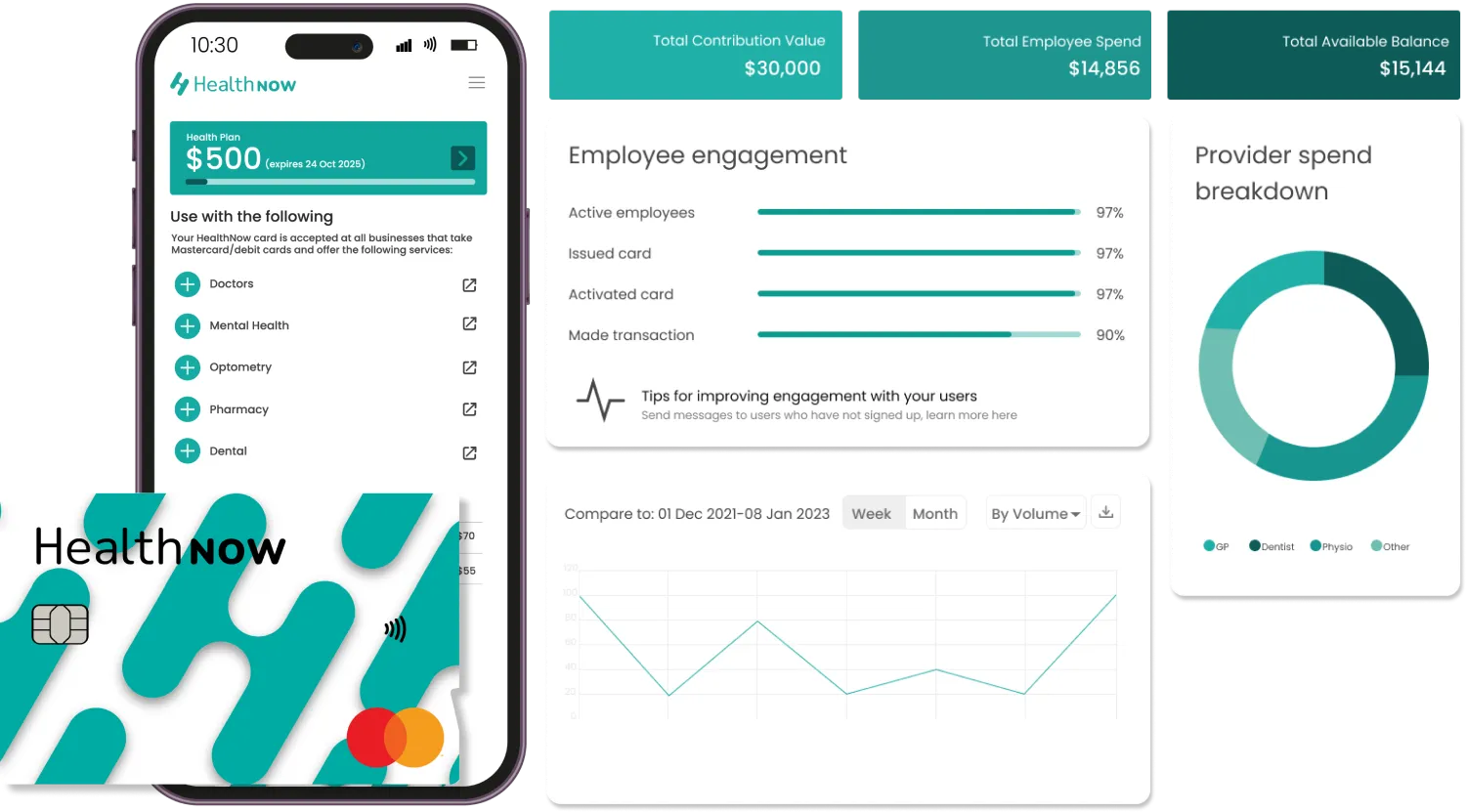Employee health and well-being have profound implications for businesses. Unaddressed health issues can result in increased absenteeism, lower productivity, and a drop in employee morale. These concerns lead to financial losses and productivity issues that could be avoided with proactive solutions, especially in the realm of mental health.
The mental health of employees has far-reaching consequences for businesses. When left unmanaged, it can result in two significant issues for employers: absenteeism and presenteeism. These not only affect the employee’s productivity but also spill over to impact colleagues’ performance and morale.
Specifically, absenteeism refers to employees taking sick days, and it can create substantial disruptions in the workplace. The financial implications of absenteeism can be staggering for companies. This includes not only paying the employee’s salary but also the hidden costs associated with covering the absent worker’s responsibilities. Presenteeism occurs when employees show up for work but are not functioning at their best due to various factors, including illness, stress, or burnout. This can be even costlier for businesses as it leads to reduced efficiency, unnoticed mistakes, and a decrease in overall productivity.
The ROI of Mental Health
Investing in the mental well-being of employees yields significant returns for businesses. Data from the World Health Organization suggests that for every $1 invested in supporting mental well-being, businesses can reap a return of over $4.27. The evidence is clear: prioritising employee mental health is not just a compassionate gesture; it’s a smart business strategy.
Burnout And Its Impact
Burnout is a state of physical, emotional, and mental exhaustion caused by excessive stress and workload. It can lead to several health problems, including anxiety, depression, and chronic fatigue. The consequences of burnout are substantial, but employers can play a crucial role in mitigating its effects. Addressing stress and burnout provides a host of advantages for employers, including:
- Increased productivity: employees suffering from stress and burnout are often less productive and may make more mistakes. A study by the American Psychological Association found that stressed employees are less engaged and productive, costing U.S. companies an estimated $500 billion per year in lost productivity.
- Reduced absenteeism and presenteeism: stressed and burnt-out employees are more likely to take sick days or come to work while unwell, leading to both reduced productivity and potential health risks for other colleagues. Reports from international mental health commissions suggest that mental health issues are the leading cause of short-term and long-term disability claims indicating a significant financial burden on employers.
- Lower turnover rates: high-stress levels and burnout can drive employees to seek new job opportunities, resulting in high turnover rates. Replacing employees is costly and can disrupt team dynamics. The cost of replacing an employee can range from one-half to two times the employee’s annual salary, according to the Society for Human Resource Management.
- Enhanced employee morale: addressing stress and burnout positively impacts employee morale. Employees who feel supported and valued by their employers are more likely to stay engaged and motivated. A study published in the Journal of Occupational Health Psychology found that employee well-being is closely tied to job satisfaction and overall morale.
- Improved workplace culture: prioritising employee well-being fosters a positive workplace culture. A supportive and inclusive culture attracts top talent, reduces conflicts, and promotes collaboration. Research published in the Health Psychology and Behavioural Medicine journal indicates that companies with strong health and well-being programs have more satisfied and committed employees.
- Open communication: encouraging employees to communicate their stress and burnout concerns fosters open dialogue. An open line of communication allows employers to address issues proactively and collaboratively, resulting in better problem-solving and decision-making.
- Space for creativity: stressed employees are often less creative and struggle with problem-solving. Addressing stress can free up mental capacity and encourage innovative thinking. There is a notable link between lower levels of employee stress and increased creativity and innovation.
- Savings in healthcare costs: supporting employees in managing their stress can lead to cost savings for employers. Chronic stress is associated with various health issues, and companies with healthier employees generally spend less on healthcare. The American Institute of Stress reports that work-related stress costs U.S. businesses around $30 billion a year in medical expenses.
- Positive brand reputation: employers who prioritise employee well-being often earn a positive brand reputation. Such organisations are more attractive to job seekers and tend to have better relationships with customers and stakeholders.
Identifying Workplace Stress
Identifying workplace stress can be challenging, but some telltale signs can reveal signs of burnout, such as increased absence rates, longer working hours, and higher turnover rates. For instance, employees who skip lunch breaks or work extended hours may be at risk of experiencing burnout. To understand the scale of the problem, you should know that:
- 79% of Australian survey respondents are experiencing burnout in their careers
- Burnout significantly increases the likelihood of employees seeking a new job next year
- Burnout leads to a disconnect from company values, management, and team, impacting productivity
- 70% of Kiwis have experienced burnout
- 21% of Australians experienced a mental disorder in the last 12 months
The Cost Of Presenteeism
Presenteeism, when employees show up for work but are not functioning at their best, can be attributed to various factors. It reduces productivity by up to one-third and can lead to even slower work efficiency, mistakes, and the spread of illness. Addressing presenteeism is paramount for businesses looking to boost productivity, lower costs, and improve workplace morale. The annual costs of presenteeism are significant, costing Australian employers AU$7 billion, UK employers £15.1 billion and US employers US$150 billion.
The Cost Of Absenteeism
Absenteeism, while an unavoidable part of business, can also have substantial consequences. Even a small percentage of absenteeism in the workforce can result in significant financial costs, disruption to workflow, and demoralisation among colleagues. It’s essential for businesses to manage unplanned absenteeism efficiently.
According to Stats NZ, unplanned absenteeism surged by 66% in the March 2022 quarter, leading to a financial strain on businesses. Beyond the direct financial implications of absenteeism, it can disrupt work, leading to downstream consequences for projects, and strain the morale and stress levels of colleagues who have to compensate for the absent employee’s work.
Global Annual Absenteeism Costs and Stats for 2022/23:
- Australia: AU$9.6 billion
- New Zealand: $1.79 billion
- Cost of an absent employee per year: $600-$1,000
- Average Australian absenteeism rate: 6% (minimum 3%, maximum 14%)
Addressing The Costs: The HealthNow Solution
HealthNow helps businesses to tackle these challenges head-on. By providing an annual fund for employees to use exclusively on health and medical services, HealthNow empowers employees to take proactive steps toward their health and well-being.
Using HealthNow as an employer to support your employees is simple: set a monetary annual limit, choose the service sectors you’re happy for your employees to access – such as physiotherapy, podiatry, optometry, audiology, and the like – or select them all. We’ll do the rest of the work and help you through every step. And don’t worry – all vendor management is taken care of by HealthNow to reduce your administrative burden.
Your employees are then set to utilise their funds as they see fit – whether that’s receiving medical care when they’re already unwell, or proactively pursuing their journey to better health in ways that will work preventatively to foster better health before they reach “the bottom of the cliff”, where absenteeism, presenteeism and burnout start becoming prevalent in the workplace.
You’ll get full insight into how your employees are using their funds, meaning you can choose to leverage this data to further support their teams in ways and on services that they can see are in demand and greatly appreciated, whether that be through wellness programs or other health initiatives.
Getting Started With HealthNow
Getting started with HealthNow so you can start reaping the benefits for your workforce is made incredibly simple and easy – just input your information here, whether you’re keen to learn more or get started. We can set you up with a demo, answer any questions, and help tailor a solution that’s best for you.
You can also read more about the meaningful employee benefits in today’s job market that can help differentiate you as an employer of choice by reading our comprehensive 2023 Employer Market Report here.







